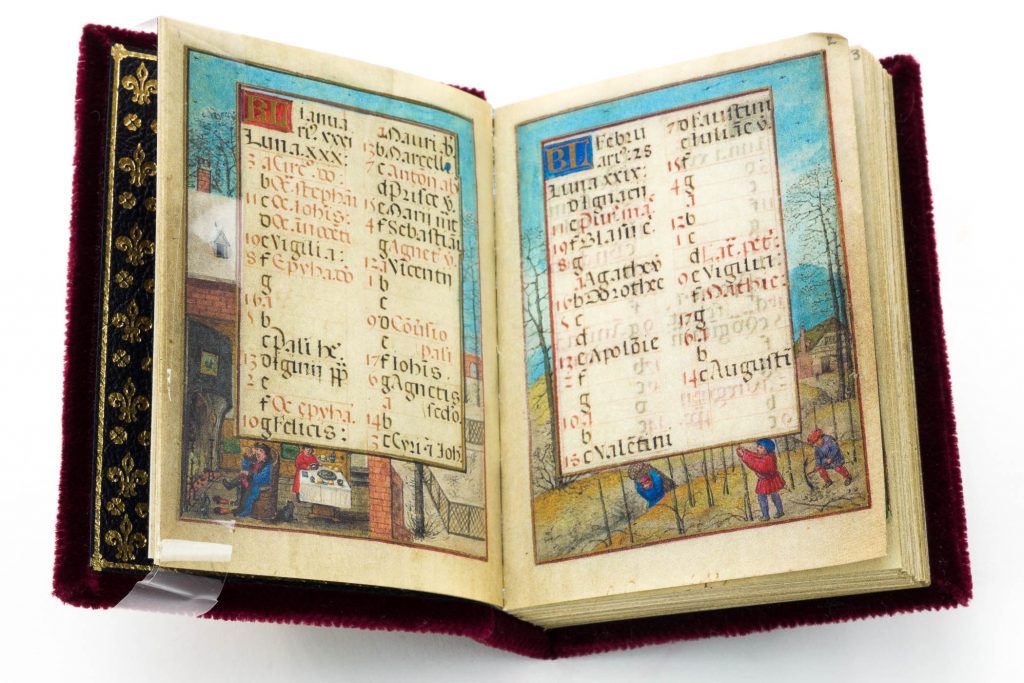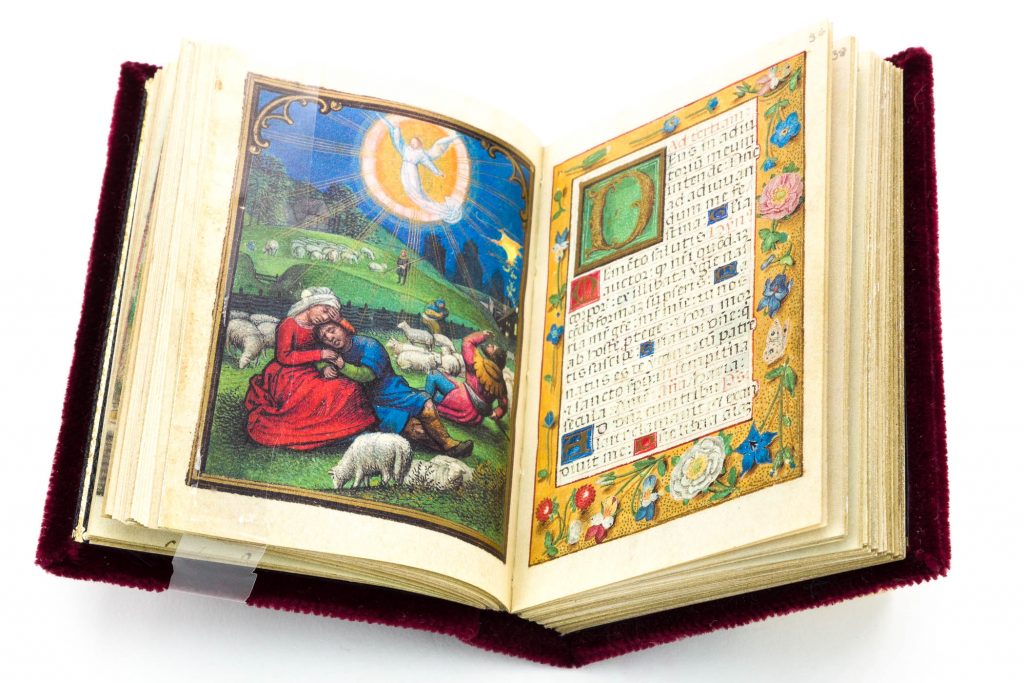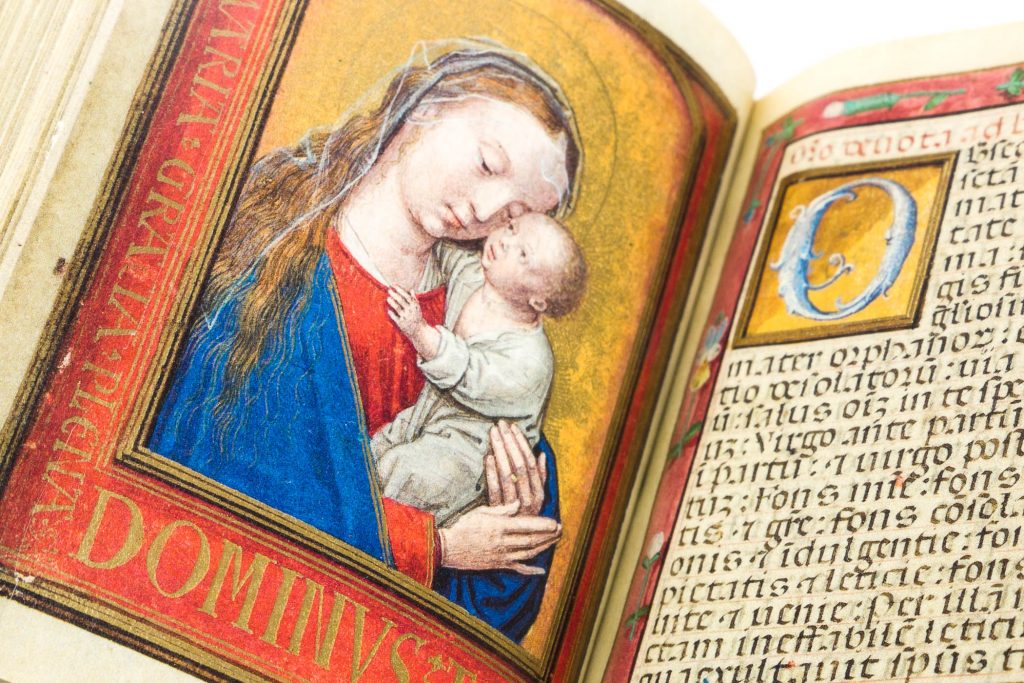Want to know a bit more about Simon Bening, one of the greatest Flemish illuminators of all time? Why not take a few minutes to read about his pictorial technique?
The Van Damme Hours, a jewel of Flemish art, is named after its scribe Antonius Van Damme, who signed and dated the manuscript in the colophon that appears at the end of the book (ff. 128v-129r).
A few features of the codex would lead us to believe that the commissioner was a man, probably a member of the Third Order of St. Francis, however, if we take into consideration the scribe he hired and the artist he commissioned, he must have been quite wealthy.
Simon Bening and his Artistic Technique
One of the reasons why this manuscript is so significant is that it was illuminated by Simon Bening, one of the greatest illuminators of Flemish tradition.
Stylistically speaking, the Van Damme Hours represents a turning point in Bening’s career. While earlier manuscripts, like the Da Costa Hours, feature smooth brushstrokes which create a somewhat hard surface, works like the Van Damme Hours exhibit a velvety texture. Of course, it would take an in-depth analysis to study the work of Bening (the facsimile is provided with a wonderfully exhaustive commentary), but here we are going to touch upon three main features that characterize Bening’s technique and which can all be found in the Van Damme Hours are:
- calendars
- landscapes
- dramatic close-up
Simon Bening’s Calendars
One of the most interesting iconographic features of the manuscript is the Calendar part, in which Simon Bening was highly specialized. Although the Calendar illustrations are not full-page, their four sides are packed with detail featuring four-sided historiated borders.

Landscapes
In the iconography of the Van Damme Hours another important role is played by landscapes packed with details of ground-cover, rocks, trees and bushes, rolling hills and blue mountains. In most of the miniatures, the landscape plays a dominant role, with the exception of those miniature where the focus is on the biblical narrative.

Dramatic Close-Up
Finally, in terms of pictorial techniques, Simon Bening makes frequent use of the “dramatic close-up”, meaning that the figures are pushed up close to the picture plane. The device decreases dramatically the distance between the viewer and the figure represented; this results in the viewer feeling, literally, closer to the figure, and emotionally, too. An example of this is in the Virgin and Child miniature (f. 97v).

Here you have just a few of the techniques that made Simon Bening great. To experience yourselves his artistically genius, check out our facsimiles and high definition galleries.
For more articles on Simon Bening and illuminated art in general, watch this space!

